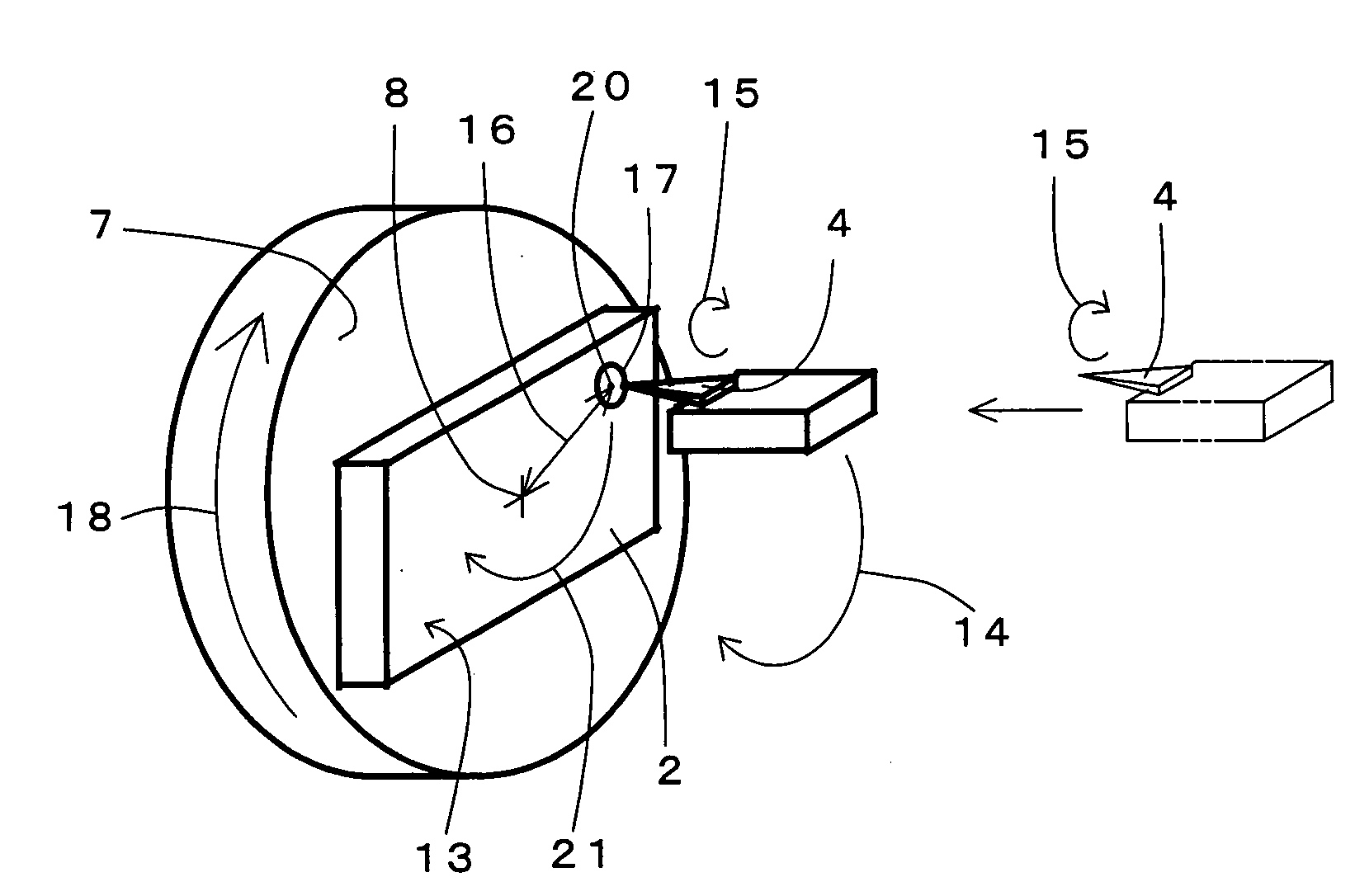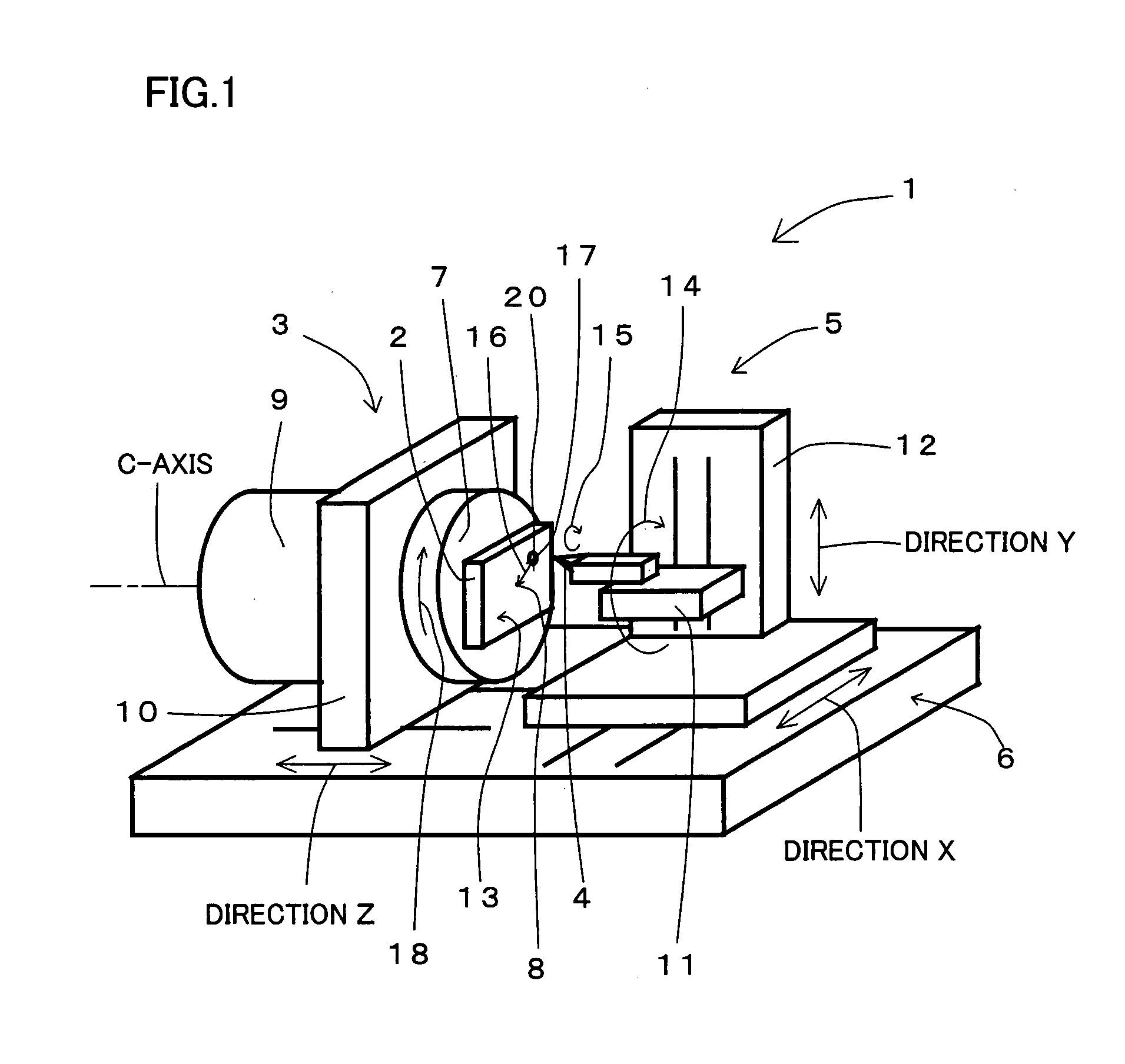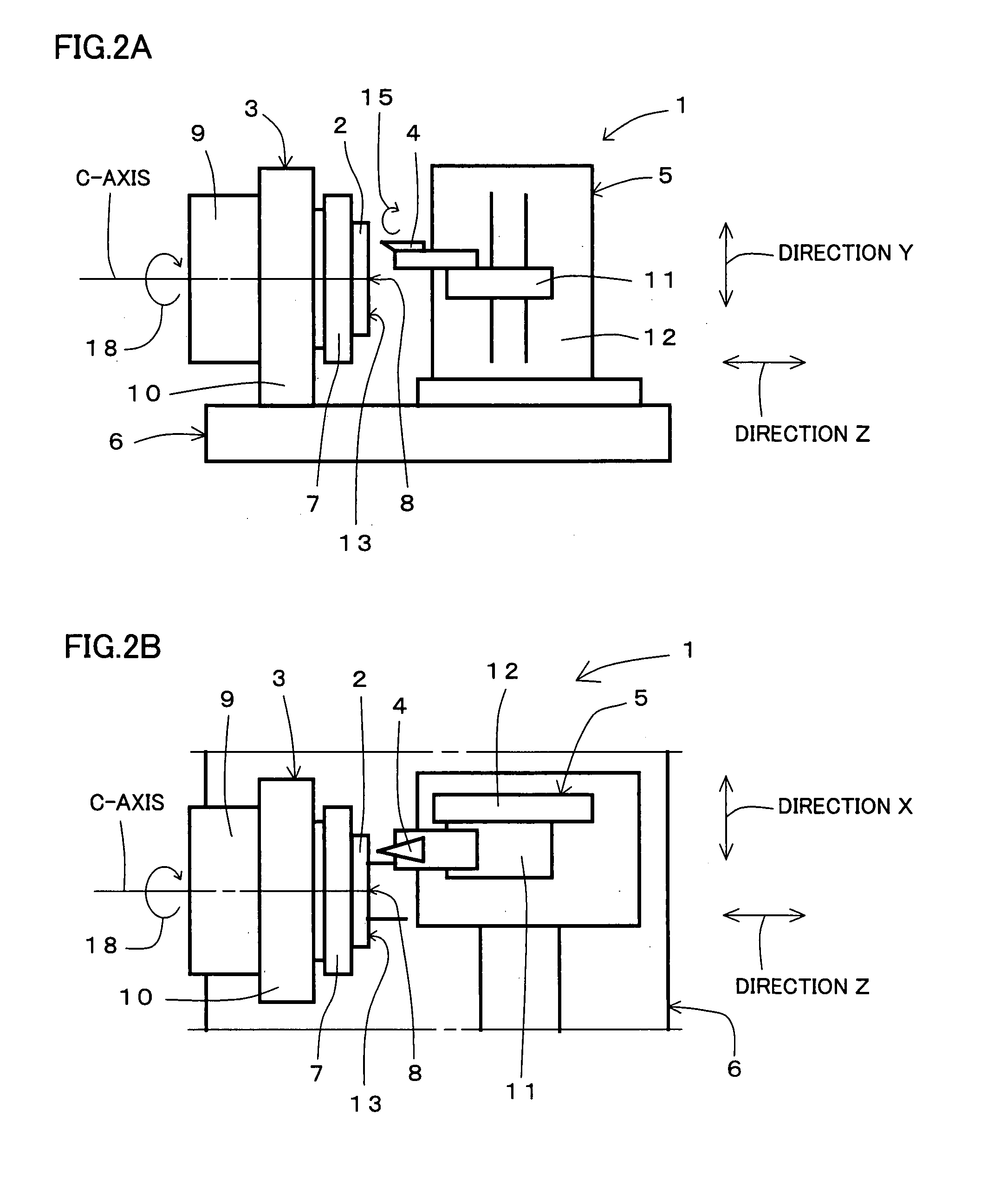Method of and apparatus for working structure
a technology of working structure and working cavity, which is applied in the field of working structure, can solve the problems of inefficiency of working cavity, large number of trials and errors of electron beam lithography, and inability to work cavities, so as to achieve efficient cutting and improve the efficiency of structur
- Summary
- Abstract
- Description
- Claims
- Application Information
AI Technical Summary
Benefits of technology
Problems solved by technology
Method used
Image
Examples
first embodiment
[0082]FIGS. 1, 2A and 2B show a four-spindle lathe-type cutting / working apparatus according to a first embodiment of the present invention. FIGS. 3A, 3B, 4A, 4B, 5, 6A, 6B, 7A and 7B show principal parts of the four-spindle lathe-type cutting / working apparatus according to the first embodiment of the present invention.
(Overall Structure of Lathe-Type Cutting / Working Apparatus)
[0083]The structure of a lathe-type cutting / working apparatus 1 according to the first embodiment of the present invention is described with reference to FIGS. 1, 2A and 2B.
[0084]As shown in FIGS. 1, 2A and 2B, lathe-type cutting / working apparatus 1 (four-spindle lathe-type cutting / working apparatus having X-, Y-, Z- and C-axes in FIGS. 1, 2A and 2B) according to the first embodiment of the present invention is provided with a mold material mount mechanism (workpiece mount mechanism) 3 mounted with a mold material (workpiece) 2 such as a steel material, a cutting tool mount mechanism 5 mounted with a cutting to...
second embodiment
[0238]A second embodiment of the present invention employing high-speed milling in place of working by elliptical vibration cutting is now described with reference to FIGS. 12A and 12B.
[0239]The basic structure of a lathe-type working apparatus 51 employed in the second embodiment is identical to that of cutting / working apparatus 1 according to the first embodiment. Therefore, identical portions are denoted by the same reference signs, and redundant description is not repeated.
(Structure of Lathe-Type Working Apparatus 51 According to Second Embodiment)
[0240]Lathe-type working apparatus 51 shown in FIG. 12A is provided with a mold material mount portion 7 mounted with a mold material 2 and a rotary cutting mechanism 53 having a rotary cutting tool 52 for high-speed milling.
[0241]According to the second embodiment, a rotary blade 55 provided on the forward end of rotary cutting tool 52 is employed in place of the vibration speed of elliptical vibration locus 14 according to the first...
PUM
| Property | Measurement | Unit |
|---|---|---|
| depth of cut | aaaaa | aaaaa |
| cutting speed | aaaaa | aaaaa |
| cutting feed rate | aaaaa | aaaaa |
Abstract
Description
Claims
Application Information
 Login to View More
Login to View More - R&D
- Intellectual Property
- Life Sciences
- Materials
- Tech Scout
- Unparalleled Data Quality
- Higher Quality Content
- 60% Fewer Hallucinations
Browse by: Latest US Patents, China's latest patents, Technical Efficacy Thesaurus, Application Domain, Technology Topic, Popular Technical Reports.
© 2025 PatSnap. All rights reserved.Legal|Privacy policy|Modern Slavery Act Transparency Statement|Sitemap|About US| Contact US: help@patsnap.com



